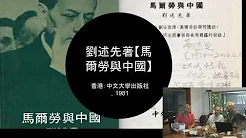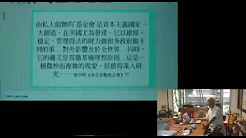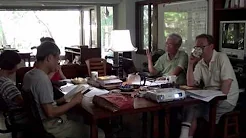維吉尼亞·伍爾夫遺失的著作將於她逝世80年後出版
《維奧莉特的一生》收錄三篇漫畫故事,將於10月7日出版
《維奧莉特的一生》完成於維吉尼亞‧伍爾夫已知最早的小說《遠航》出版八年前。圖片來源:Gisele Freund/Photo Researchers History
Gareth Corfield
2025年9月21日 英國夏令時間下午7:17
弗吉尼亞·伍爾夫遺失的著作將於下個月出版,其手稿在一座莊園中被發現。
《維奧莉特的一生》收錄了三篇關於女巨人的漫畫故事。
該書將於10月7日出版,為讀者提供這位20世紀最具影響力的女性主義作家之一的全新視角。
以小說和女權主義散文聞名的伍爾夫於1941年自殺。她的作品聚焦於英國上流社會令人窒息的社會風氣,對早期現代女性主義思想家產生了深遠的影響。
伍爾夫新書的發現,挑戰了人們對她「陰鬱、有自殺傾向、陰暗」的刻板印象,將令文學學者們興奮不已。
《維奧莉特的一生》完成於伍爾夫已知最早的小說《遠航》出版八年前。
英國作家維吉尼亞·伍爾夫新作《維奧莉特的一生》被發現
烏爾米拉·塞沙吉里教授在威爾特郡朗利特莊園研究伍爾夫1939年的自傳體散文《過去的素描》時,偶然發現了這部手稿。
 The Life of Violet was completed eight years before the publication of Virginia Woolf’s earliest known novel, The Voyage Out Credit: Gisele Freund/Photo Researchers History
The Life of Violet was completed eight years before the publication of Virginia Woolf’s earliest known novel, The Voyage Out Credit: Gisele Freund/Photo Researchers HistoryGareth Corfield
21 September 2025 7:17pm BST
A lost book by Virginia Woolf will be published next month after its manuscript was discovered in a stately home.
The Life of Violet, is a collection of three comic stories about a giantess.
It will be published on Oct 7, providing a new insight into one of the 20th century’s most influential feminist writers.
Woolf, known for novels and feminist essays, took her own life in 1941. Her works became inspirational to early modern feminist thinkers because of their focus on the stifling social mores of upper-class England.
The discovery of a new Woolf book which challenges perceptions of her as “gloomy, suicidal and dark” will excite literary scholars.
The Life of Violet was completed eight years before the publication of Woolf’s earliest known novel, The Voyage Out.
 Newly-discovered work by English writer Virginia Woolf, The Life of Violet
Newly-discovered work by English writer Virginia Woolf, The Life of VioletProf Urmila Seshagiri stumbled across the manuscript in Wiltshire’s Longleat House while researching Woolf’s 1939 autobiographical essay, A Sketch of the Past.
海浪
The Waves
原文作者: Virginia Woolf
譯者: 黃慧敏
出版社:麥田
出版日期:2007/2025
維吉尼亞.吳爾芙最顛峰的代表作。也是她老是被聲音「驚擾」的一次交響曲,出版後再度面臨精神崩潰的狀態。
她的目標是要為生命照像,從最早的感覺甦醒一直到最後;生命的夢想、野心、期盼、成就和失敗,一直到最終的幻滅。」-約翰.賽門
「當我們身不在那裡但依舊存在的事物」,1926年吳爾芙在日記裡,提到寫這樣一本書的想法。隨後她將這個想法最早實現於《燈塔行》,就是「當我們身不在那裡但想起一張在那裡的桌子」。
《海浪》,將這個想法推到了最極盡。
六個人物,在那裡也不在那裡,同時不在也同時存在。挑戰吳爾芙最巔峰、最終極的意識流作品。
《海浪》也許是吳爾芙作品中結構最形式化,敘事本身全然內心化的一部作品。《海浪》透過六個人物不斷的獨白,不斷的獨白,不斷的獨白…,呈現九個像故事又不是故事的段落。六個人物用自己描述性的「標籤」或主題曲,在全書中持續地變奏:人物在長大的過程中,漸漸發展出歧異性。隨著死亡和失落陰影的籠罩,漸漸明瞭某些野心和夢想將永遠不會實現,感受到日益年老所帶來的失意悵然。
而太陽自海邊的花園升起,在結尾時落下,所有事物背後都是海浪。這些固定出現、純描述的意象插曲,分隔了故事的段落,也是書中唯一的客觀性,其他盡是無休止的內心的獨白。因所有寫實主義的花招盡被丟棄,使其更像是古典戲劇而非小說。
作者簡介
維吉妮亞.吳爾芙(Virginia Woolf,1882.01.25 ~ 1941.03.28)
英國女作家,被譽為二十世紀現代主義與女性主義的先鋒。兩次世界大戰期間,她是倫敦文學界的核心人物,同時也是布倫茲伯利藝文圈主要成員之一。最知名的小說包括《戴洛威夫人》、《燈塔行》、《自己的房間》、《海浪》等。
吳爾芙被譽為二十偉大的小說家,現代主義文學潮流的先鋒。她對英語語言革新良多,在小說中嘗試意識流的寫作方法,試圖去描繪在人們心底的潛意識。愛德華‧摩根‧福斯特稱她將英語「朝著光明的方向推進了一小步」。她在文學上的成就和創新至今仍有影響。
吳爾芙患有嚴重的抑鬱症,她曾在1936年寫給朋友的信中提及:「永不要相信我的信,不騙你,寫這信之前我徹夜未眠,瞪著一瓶chloral,喃喃說著不能、不要,你不能飲。」1941年3月28日,她在自己的口袋?裝滿了石頭之後,投入了位於羅德麥爾她家附近的歐塞河自盡。
- 作者: Woolf, Virginia
- 原文出版社:Sahara Publisher Books
- 出版日期:1931/10/08
- 語言:英文
Virginia Woolf and The Hogarth Press 漢清講堂 2017-05-19
hc iTaiwan forum
--- 董橋〈愛書瑣記〉中的The Waste Land by T S Eliot, Hogarth Press edition

The Waste Land by T S Eliot, Hogarth Press edition
 View images from this item (2)
View images from this item (2)The Waste Land is arguably the most influential modernist poem of the 20th century. It was first published in October 1922 in the British journal The Criterion, then a month later in the American journal The Dial, before appearing in book form, firstly, in America by Boni and Liverlight in 1922, and then in 1923 by Leonard and Virginia Woolf’s Hogarth Press.
The poem is divided into five sections; ‘The Burial of the Dead’, ‘A Game of Chess’, ‘The Fire Sermon’, ‘Death by Water’, and ‘What Thunder Said’. When the poem appeared in book form, Eliot included explanatory notes to the many religious, cultural, and literary allusions. Nevertheless the poem remains difficult and complex with references to Christianity, Buddhism, and Hinduism. Eliot also incorporates a number of different languages including, French, Italian, Greek, and German. Throughout the poem there are allusions to Shakespeare, Dante, Ovid, Milton, Baudelaire, Virgil, Spenser, and Homer among others. Juxtaposed to these highbrow references are colloquial passages of public house conversations, popular music hall song, and the Tarot.
The London Library
23 years after she joined @TheLondonLib as a life member, #VirginiaWoolf published her great novel "To the Lighthouse" #onthisday 1927.
The first edition ran to 3000 copies - this is one of them.
Virginia Woolf and The Hogarth Press 【漢清講堂】 心得分享與討論會日期:2017年5月19日地址:台北市新生南路三段88號2樓維吉尼 ...
決定要介紹The Hogarth Press,就去圖書館借僅有的2~3本。(有一本書架上找不到)--發現有的我印反了。The Waves 在1931年2刷!(愛丁堡印刷)
Vanessa Bell and Duncan Grant's proto-feminist masterpiece is on public view for the first time.
WSJ.COM
How Virginia Woolf Decorated Her Room of One's Own

Decades Before Judy Chicago's 'The Dinner Party,' Virginia Woolf's Sister Made a Set of Dinner Plates Celebrating 50 Historic Women | artnet News
NEWS.ARTNET.COM
------Google今天的doodle慶祝VW冥誕......
連以前作的漢清講堂,都沒強調他先生的大功勞.....

"Think what it would mean if you could teach, if you could learn, the art of writing," said Virginia Woolf, in what is thought to be the only surviving recording of her voice. She was born 137 years ago today.

BBC.COM
The only surviving recording of Virginia Woolf
激情全消融, all passion spent.
The Hogarth Press
http://hcshakespeare.blogspot.tw/…/all-passion-spent-hogart…
2017年4月27日下午4:07 ·
決定要介紹The Hogarth Press,就去圖書館借僅有的2~3本。(有一本書架上找不到)--發現有的我印反了。The Waves 在1931年2刷!(愛丁堡印刷)
Google's Doodle celebrating the 136th birthday of novelist Virginia Woolf. Google
Adeline Virginia Woolf was an English writer. She is considered one of the foremost modernists of the 20th-century and a pioneer in the use of stream of consciousness as a narrative device.Wikipedia
Born: January 25, 1882, Kensington, London, United Kingdom
Died: March 28, 1941, Lewes, United Kingdom
Movies: Orlando, Mrs. Dalloway, To the Lighthouse, Golven, A Room of One's Own, Simple Gifts
Parents: Leslie Stephen, Julia Stephen
Quotes
One cannot think well, love well, sleep well, if one has not dined well.
You cannot find peace by avoiding life.
Arrange whatever pieces come your way.
世界著名出版社之旅:The Hogarth Press (1917- )
The London Library
Celebrating the birthday of #VirginiaWoolf who began her own journey through the luminous halo #OTD 1882
-----
Hanching Chung
2017年4月29日 10:44 ·
The Hogarth Press,1917年, Virginia and Leonard Woolf合創於倫敦:
The London Library
#VirginiaWoolf's 2nd novel "Night and Day" was published #onthisday1919, containing this touching dedication to her sister (and fellow The London Library member) #VanessaBell.
-------
The New Yorker
A Daily Shouts from the archive: Vita: "No, we only did it twice. Def not that great. Don’t think of her in that way."
Virginia: "Um?"
Vita: "Oops, wrong text."

The Collected Sexts of Virginia Woolf and Vita Sackville-West
Virginia: “Longing to see you. Lunch Thurs?” Vita: “Really busy just now—weeding garden, walking puppies, etc.”
NEWYORKER.COM
























































